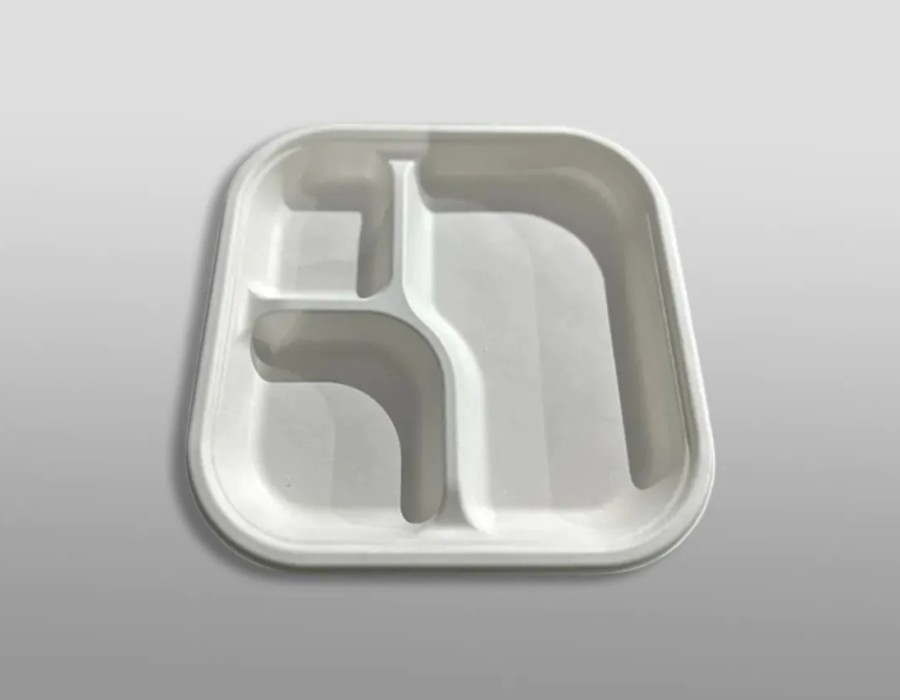Disposable plates have been a convenient dining solution for decades, but their impact on the environment has led to a much-needed shift toward eco-friendly alternatives. As concerns about plastic pollution and sustainability grow, the transition from traditional plastic plates to biodegradable disposable plates is gaining momentum.
In this blog, we’ll explore how disposable plates have evolved, their environmental impact, and why biodegradable solutions are the future.
The Rise of Plastic Disposable Plates
Plastic plates became popular in the mid-20th century due to their:
✅ Affordability – Cheap to produce and widely available.
✅ Durability – Lightweight, strong, and resistant to moisture.
✅ Convenience – Ideal for parties, events, and fast-food service.
However, over time, their environmental consequences became impossible to ignore.
The Environmental Impact of Plastic Plates
Despite their convenience, plastic disposable plates have serious downsides:
❌ Non-biodegradable – Plastic plates take hundreds of years to decompose.
❌ Microplastic Pollution – When plastic breaks down, it releases microplastics into soil and water.
❌ Harmful to Wildlife – Marine animals and birds often mistake plastic waste for food.
❌ Landfill Overflow – Millions of tons of plastic waste fill landfills every year.
With these concerns in mind, people started looking for better alternatives.
The Shift Toward Biodegradable Disposable Plates
As awareness of plastic pollution grew, manufacturers began developing biodegradable options. These plates are made from natural, compostable materials, offering a greener alternative to plastic.
What Makes a Plate Biodegradable?
For a disposable plate to be considered biodegradable, it must:
✔️ Break down naturally in the environment.
✔️ Leave no toxic residue behind.
✔️ Compost within months instead of years.
Popular Biodegradable Plate Materials
New innovations have led to a variety of biodegradable disposable plate options, including:
1. Bagasse (Sugarcane Fiber) Plates
🌱 Made from leftover sugarcane pulp.
🌱 Compostable and sturdy for hot and cold foods.
🌱 Resistant to grease and moisture.
2. Palm Leaf Plates
🍃 Made from naturally fallen palm leaves.
🍃 Elegant, durable, and chemical-free.
🍃 Can decompose in less than two months.
3. Bamboo Plates
🎋 Made from fast-growing bamboo plants.
🎋 Lightweight yet durable for serving meals.
🎋 Naturally antimicrobial and compostable.
4. Cornstarch-Based Plates
🌽 Look and feel like plastic but biodegrade quickly.
🌽 Heat-resistant and safe for food contact.
🌽 Often used in commercial composting facilities.
5. Mycelium (Mushroom) Plates
🍄 Made from fungal roots and agricultural waste.
🍄 Strong enough for hot foods and liquids.
🍄 Compostable in just a few weeks.
Why Biodegradable Plates Are the Future
Switching to biodegradable disposable plates has several benefits:
✅ Reduces Plastic Waste – Helps cut down on landfill overflow.
✅ Eco-Friendly Manufacturing – Uses renewable resources.
✅ Compostable & Non-Toxic – Leaves no harmful chemicals behind.
✅ Meets Sustainability Goals – Ideal for restaurants, catering, and events.
Final Thoughts: A Greener Tomorrow Starts Today
The journey from plastic plates to biodegradable alternatives marks a significant step in reducing environmental harm. As more consumers, businesses, and event planners make the switch, the demand for eco-friendly tableware continues to rise.
By choosing biodegradable plates, you’re not just making a smart choice for convenience—you’re making a responsible choice for the planet. 🌎💚





Comments